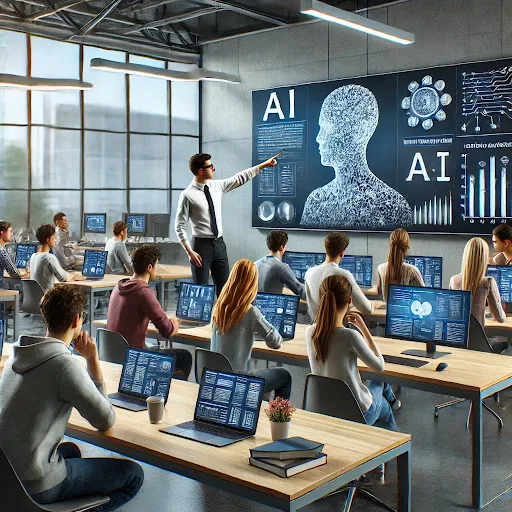Integrating Critical Thinking into AI Education: A Framework for Future-Ready Learning
Teaching AI through the lens of critical thinking is an approach that emphasizes the importance of fostering deep, analytical, and reflective thought in both AI systems and the people interacting with them. By integrating critical thinking principles into AI education, we can better understand and utilize AI's capabilities while ensuring ethical and effective applications. Here’s how this concept can be structured:
1. Understanding AI's Role in Critical Thinking
1.1 Defining Critical Thinking: Start by exploring what critical thinking means—analyzing, evaluating, and synthesizing information to make informed decisions.
1.2 AI's Analytical Power: Highlight how AI can assist in processing large amounts of data, spotting patterns, and generating insights that feed into critical thinking.
1.3 Human-AI Collaboration: Emphasize the role of humans in interpreting AI-generated data, applying judgment, and making decisions that AI cannot autonomously make.
2. Incorporating Critical Thinking into AI Education
2.1 AI Literacy: Teach the basics of AI to foster a critical understanding of how these systems work, including their limitations and biases.
2.2 Questioning AI Outputs: Encourage users to question AI outputs, understanding that AI can make mistakes or produce biased results. This promotes a mindset of verification and skepticism.
2.3 Ethical Considerations: Discuss the ethical implications of AI, encouraging learners to think critically about how AI decisions affect society, privacy, and fairness.
3. Tools and Techniques for Critical Thinking in AI
3.1 Scenario Analysis: Use real-world scenarios where AI is used to solve problems, and engage students in evaluating the effectiveness and ethics of these solutions.
3.2 Socratic Questioning: Apply Socratic questioning techniques to AI interactions. For example, when an AI provides a recommendation, ask, "What is the reasoning behind this suggestion? What assumptions are being made?"
3.3 Case Studies: Analyze case studies where AI decisions had significant impacts, both positive and negative. This helps in understanding the real-world implications of AI.
4.Developing AI Systems with Critical Thinking in Mind
4.1 Designing Transparent AI: Advocate for the development of AI systems that are transparent and explainable, allowing users to understand the rationale behind decisions.
4.2 Bias Detection: Equip AI systems with mechanisms to detect and mitigate biases, promoting fairness and accuracy.
4.3 Continuous Learning: Implement AI systems that adapt and learn from human feedback, improving their critical decision-making capabilities over time.
5. Critical Thinking Exercises Using AI
5.1 AI-Powered Debates: Organize debates where AI tools assist participants by providing data, counterarguments, and supporting evidence, fostering critical examination of different perspectives.
5.2 Simulation Exercises: Use AI simulations to explore complex scenarios, such as climate change or economic crises, and analyze the outcomes to develop critical problem-solving skills.
6. Conclusion
6.1 Empowering Future Leaders: By teaching AI through the lens of critical thinking, we prepare future leaders to harness AI responsibly, making decisions that are informed, ethical, and effective.
6.2 Building a Balanced Perspective: Encourage a balanced perspective where AI is seen as a tool to augment human thinking, not replace it.
This approach ensures that as AI becomes more integrated into society, both AI developers and users are equipped with the critical thinking skills necessary to navigate the challenges and opportunities that come with it.
This post is part of the "AI Evangelist series," authored by Ravindra Dastikop, AI Evangelist. The series explores the power and potential of AI in various sectors, supported by AI tools like ChatGPT and image generators
#CriticalThinking #AIinEducation #FutureLearning #AIandEthics #EdTech #InnovativeTeaching #AIforGood #DigitalEducation #21stCenturySkills #AIandHumanCollaboration
